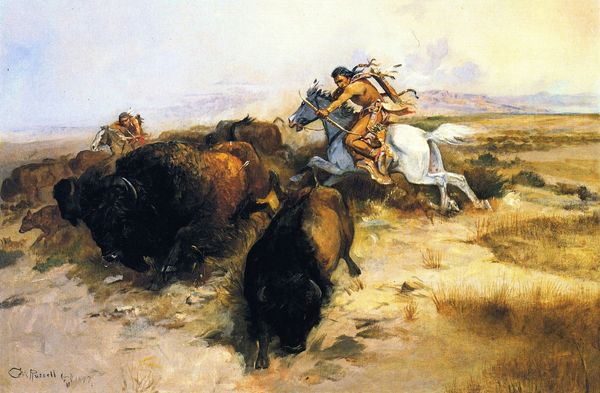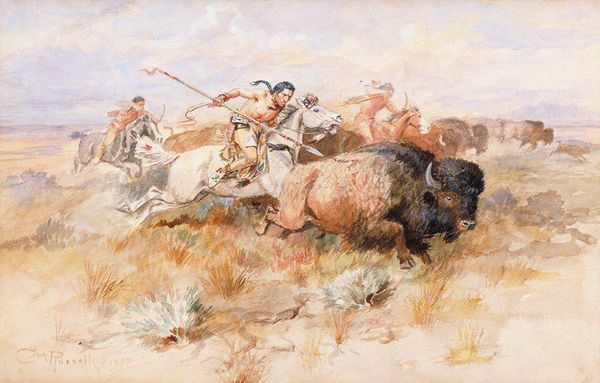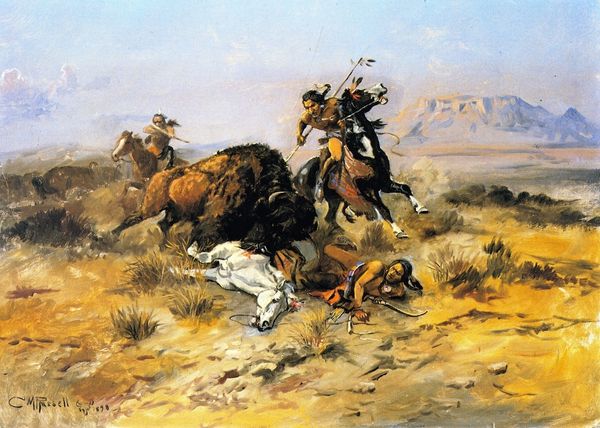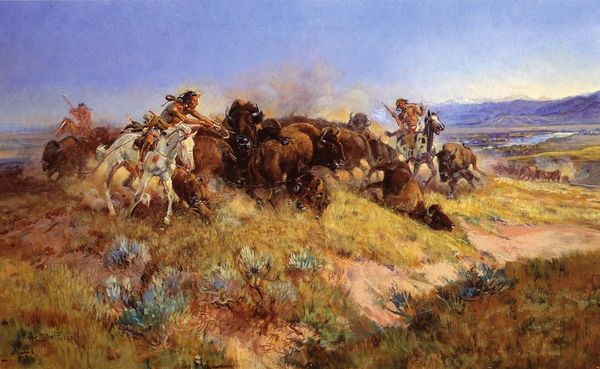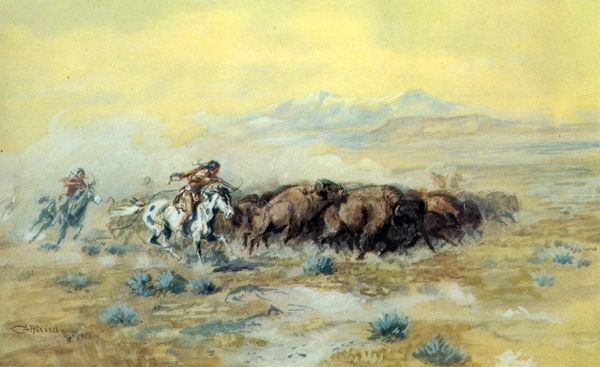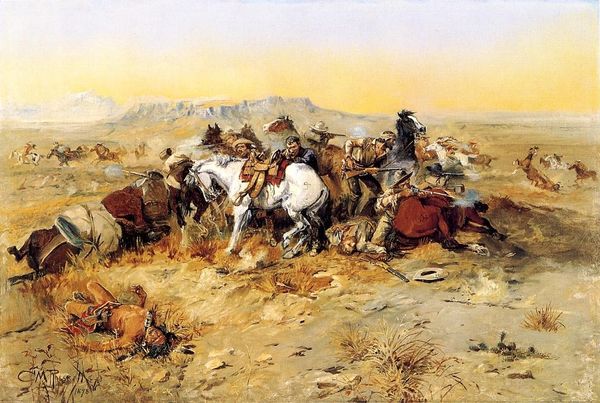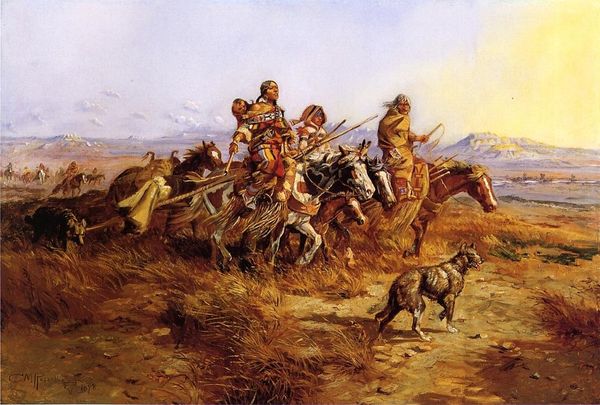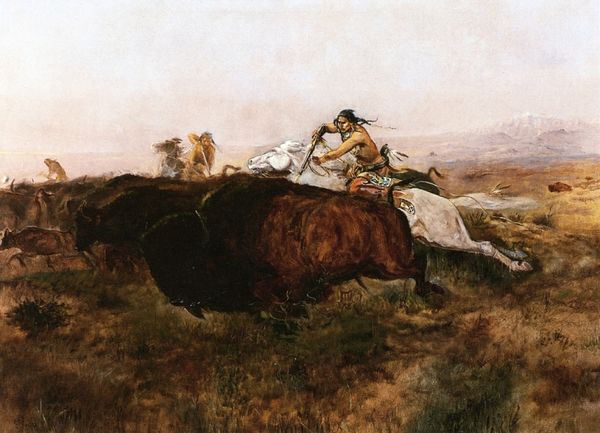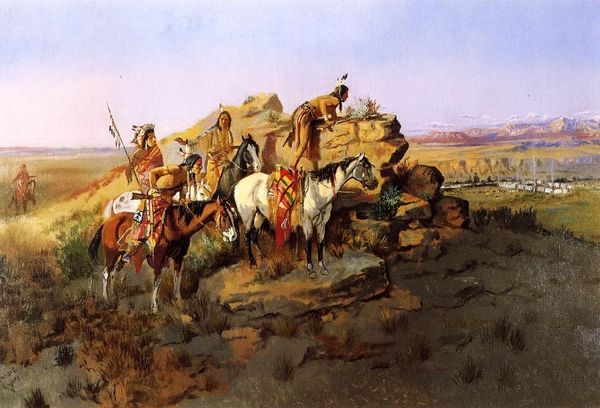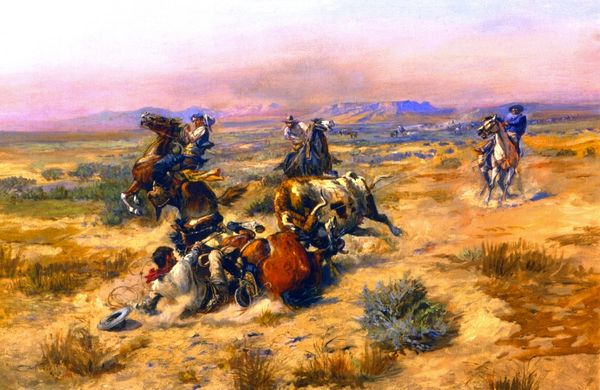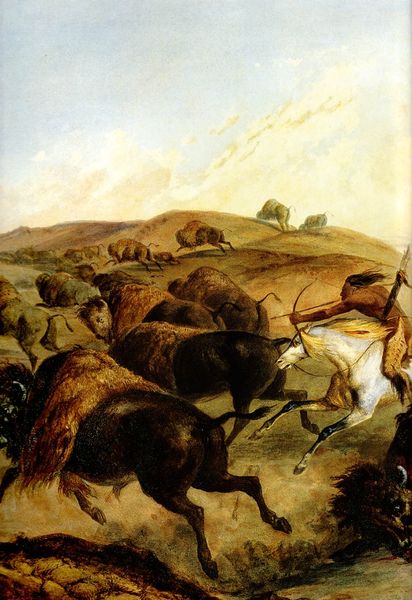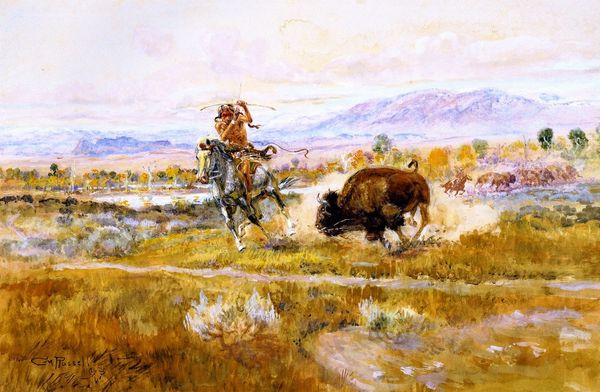
painting, oil-paint
#
painting
#
oil-paint
#
landscape
#
figuration
#
oil painting
Copyright: Public domain
Curator: "The Buffalo Hunt" is an 1895 oil on canvas by Charles M. Russell depicting a scene of Indigenous hunters pursuing bison. What are your initial thoughts? Editor: My immediate response is one of intense energy and implied violence. The diagonal composition throws us right into the heart of a chaotic, high-stakes hunt. Curator: Precisely. Russell’s paintings weren’t simply romantic portrayals of the West; they are embedded within the complex narrative of Indigenous erasure. What is visible but not explicitly said here? Editor: Definitely. You're looking at not just a genre scene of a hunt, but a socio-political statement—at a time when the buffalo population was decimated and Native American ways of life were under direct threat by the US government. It prompts difficult discussions about agency, resilience, and survival under systemic oppression. How complicit was Russell in this cultural shift? Curator: Russell himself lived and worked amongst the tribes of Montana. Yet, he simultaneously profited off imagery rooted in romanticism and stereotypes for a consumer market in the East. The composition's dynamism might unconsciously echo the colonial thirst for acquisition and conquest. Editor: I see that perspective. This image contributes to a narrative – albeit one of respect in Russell’s view - that the white man, at least indirectly, understood or had claim over the ways and spaces of native culture. This piece raises ethical questions about cultural appropriation and the depiction of vulnerable groups. Are we appreciating, or fetishizing? Curator: Indeed, are we historicizing and contextualizing in a way that allows visitors to think critically about whose stories are privileged? Or are we simply perpetuating a history written from a position of power? The power of art lies in its ability to spark debate and challenge our preconceived notions, not merely confirm them. Editor: Exactly, and this painting invites us to consider that complex relationship—between history, art, and social change—a vital interrogation of historical depictions, especially when they involve communities that were—and still are—fighting for self-representation. Curator: Absolutely, a crucial conversation when we explore the historical and social contexts in paintings like "The Buffalo Hunt" here. Editor: An absolutely critical consideration for all art.
Comments
No comments
Be the first to comment and join the conversation on the ultimate creative platform.

